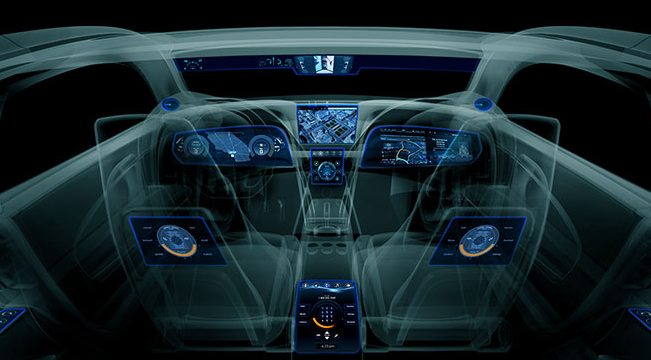
Nvidia has announced the Drive CX, a digital cockpit for cars based on the company’s X1 processor, yesterday. Drive CX includes advanced visual computing architecture and it can power 16.6 megapixels across multiple screens in a car. In addition to Drive CX, which powers the infotainment system, Nvidia also announced an image processing platform, Drive PX, which will help build self-driving cars in the future.
In Nvidia’s imagination, cars in the future will have “more computing horsepower than anything you own today,” in addition to large numbers of displays which will replace many of the current capabilities in a car. For example, the mirror would be replaced by a smart display.
Today, even a high-end car might not have but a single megapixel on its infotainment systems. With Drive CX, cars will be able to have up to four Full HD or two 4K screens, simultaneously. The platform also powers features such as speech and image recognition. Car manufacturers will have access to a Drive CX reference. Nvidia talked about a number of uses for its platforms.
A rather playful example was dynamically rendered 3D interfaces for a car’s dashboard. You would be able to switch “textures”, so one day your speedometer and navigation will have a metal-and-neon look, and the next you’ll have everything coated with bamboo. Another use for Nvidia’s platforms comes in the form of driver assistance tools, such as those enabled by radar, ultrasonic sensors, and image-recognition technologies.
The Drive PX, which Nvidia announced along with the Drive CX, features two X1 processors that uses computer-vision technology. A neural network is formed with inputs from up to 12 cameras, which the PX processes to be able to build a model of the world around the car, enabling us to get to self-driving cars.
This article was syndicated from Business 2 Community: Nvidia Announces Drive CX, A New Visual Computing Platforms For Cars
More Technology & Innovation articles from Business 2 Community:
- Japanese Police Believe Missing Mt Gox Bitcoins Likely An Inside Job
- Google’s Project Zero Exposes Windows 8.1 Bug Before Microsoft Can Patch It
- 15 Business Stats For Starting 2015 Off Strong
- Software Sprinting: What Is Rapid Application Development?
- 3 Companies Who Found Wins in the Assets They Already Had




